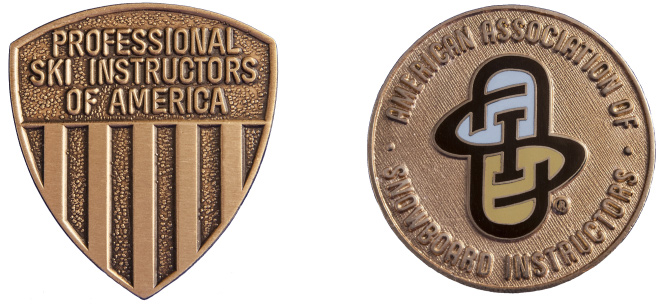The Education Task Force Highlight Series spotlights education leaders working to create new Certification Standards, education resources, and communication strategies that will benefit all members.
In this highlight, we sit down with PSIA-AASI Northern Rocky Mountain Adaptive Chair Chad Biggerstaff.
What task force are you on?
The Adaptive Alpine and Snowboard Task Force.
What’s your current snowsports job title?
PSIA-AASI Northern Rocky Mountain Adaptive Chair and Examiner.
Share a brief bio of your professional snowsports instruction history.
I was hired as the Big Sky Adaptive Snowsports Program Director with Eagle Mount at Montana’s Big Sky Resort in 2011. As I spent more time running the program, I started attending PSIA-AASI trainings and getting my certifications. After a few years, I decided I wanted to become an examiner as we did not have an adaptive examiner in the Northern Rocky Mountain Division at the time. After a few years of completing the necessary certifications, I was an adaptive examiner along with one of my fellow division members, Trevor Hildebrand. Some of my favorite memories from being on snow are from the clinics and exams that I’ve led.
What is your current role on the task force?
We’re working towards the strategic alignment goals that all the task forces have been working towards the last several years. With adaptive, we have to take the same process the other task forces have been working through and apply our learning outcomes to six different disciplines, so it’s a lot of work and we’re excited to put everything together to give adaptive instructors the latest and greatest information about adaptive snowsports instruction.
What are the task force’s main goals and how are you working to accomplish them?
Our goal is help provide our fellow adaptive instructors across the country the best information possible for clinics, exams, and everyday lessons.
How will this benefit members?
The better the information we can put out to the membership, the more opportunity they will have to grow in their instruction, both in attaining additional certifications, and in providing the best lessons possible for their students.
Why is it important to you to work for the benefit of other members?
Many of the instructors in the adaptive world are volunteers. As such, they sometimes have limited access to training. The more quality information we can provide them, the better the opportunity they have to improve as instructors and skiers and riders. We want to improve the quality of the lessons we provide across the country and also give all of our adaptive instructors the confidence to provide great lessons for their students.
What’s the fun factor?
The fun factor for me is getting to share my love of skiing with other people. Whether it’s a student in a lesson, a clinic for my fellow instructors, or even an exam, I want the people I’m working with to have fun and enjoy their time on the snow because that’s why we do what we do. There’s no point being out there if you’re not having fun!
Favorite part of being an instructor?
My favorite part of being an instructor is the people I get to work with every day, whether they are someone I’ve never worked with before or someone I’ve been skiing with for 10 years. The volunteer instructors that I get to see in action putting their heart and soul into their lesson. My fellow task force members who are all working so hard to push adaptive skiing and snowboarding to new heights. Everyone is so passionate and excited about what we’re doing and it gives me great joy to be a part of it all!

